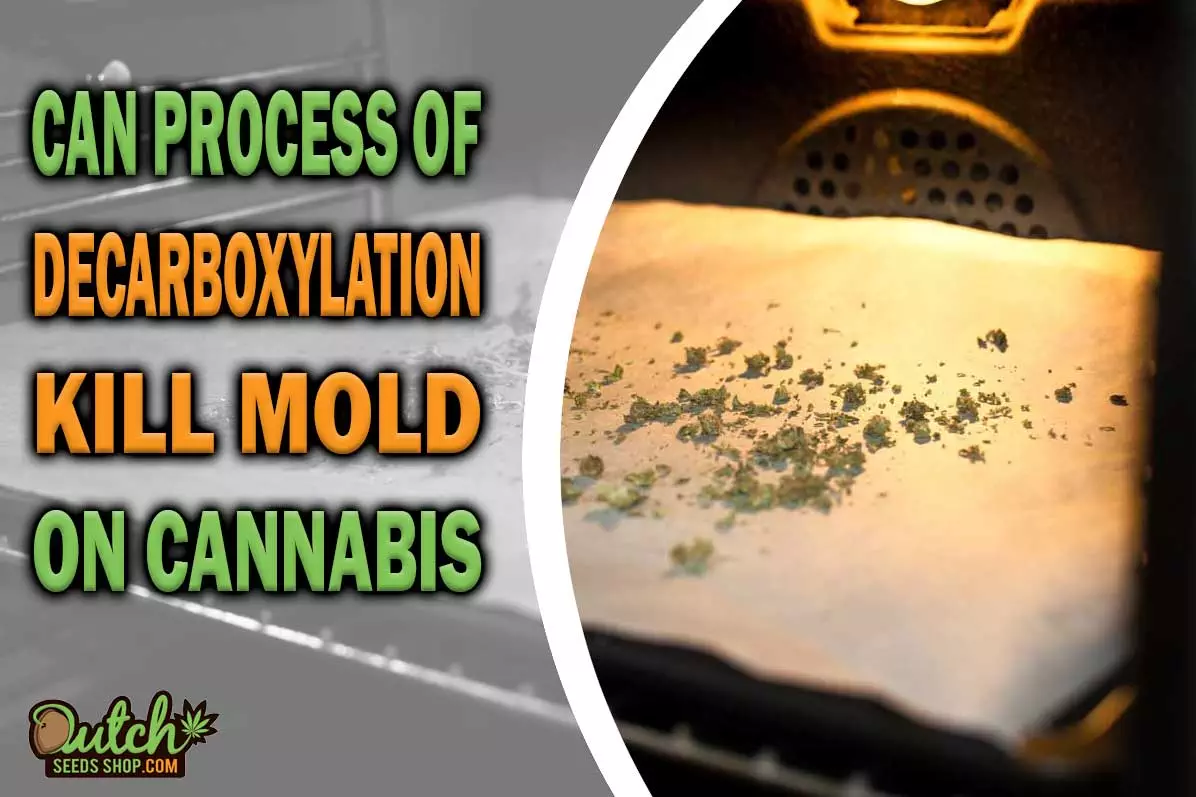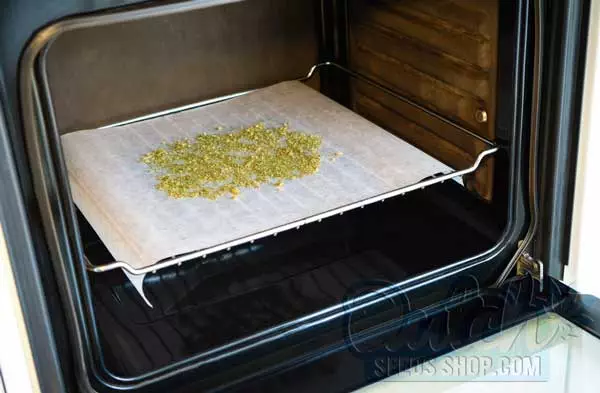Does Decarboxylation Kill Mold on Cannabis?
Greetings, fellow green-thumb enthusiasts! Let’s get the giggles out of the way first, shall we? I heard a joke the other day: Why don’t cannabis plants ever get lost? Because they always take the “high” road! Okay, now that we’re all warmed up, let’s dive into a pressing question that’s been buzzing in the cannabis…

Understanding Decarboxylation
Decarboxylation might sound like a word you’d drop at a science fair to impress the judges, but it’s a simple concept.
When cannabis is harvested, it contains cannabinoid acids like THCA and CBDA, which won’t get you anywhere near cloud nine.
Decarboxylation is the magical process that transforms these acids into the mind-bending THC and the chillaxing CBD we all know and love.
Imagine this: you’ve got a beautifully baked brownie.
But this brownie has a secret – it’s as sober as a judge!
It’s packed with THCA, not THC, so you could munch it all day and never catch a buzz.
But pop that brownie in the oven let it sizzle, and voila!
That THCA has now decarboxylated into THC.
Your brownie is now ready to take you to the moon and back.
The Role of Heat in Decarboxylation

The process of decarboxylation is like a high-stakes episode of MasterChef – it’s all about the heat.
The trick is to apply the right temperature for the right amount of time.
This heat exposure will cause the cannabinoid acids to lose a carboxyl group (a carbon atom bound to two oxygen atoms) and release some CO2.
It’s like removing a winter coat in a heated room.
Only after shedding this “coat” can THCA and CBDA transform into the THC and CBD we all know and appreciate.
Mold on Cannabis
But just as a coin has two sides, so does cannabis.
While it can be the source of much joy and relaxation, it can also be a breeding ground for mold if not cared for properly.
And no, this isn’t the kind of fungus you want in your system – it’s not like munching on a magic mushroom.
Mold is a party crasher that loves damp and humid environments.
Think of it as that unwanted guest who shows up uninvited and makes a total mess of things.
It reproduces faster than rabbits through tiny, light fungal spores.
And trust me, if this freeloader lands on your cannabis, you’ll be left with buds that look more like a science experiment gone wrong than a potentially good time.
Common Types of Mold on Cannabis

Now, mold on cannabis isn’t one-size-fits-all.
You have your “classic” grey mold, botrytis, and ever-present white powdery mildew.
These are the Kardashians of the mold world – ubiquitous and hard to ignore.
They’re not just an eyesore; consuming moldy cannabis can lead to various unpleasant health effects, like allergic reactions and lung infections.
So, to answer our main question…
Can Decarboxylation Kill Mold?
… sadly, the answer is no. Decarboxylation does not kill mold.
Just as a resilient cockroach can survive a nuclear explosion, mold can withstand the heat of decarboxylation.
You might be thinking, “But wait! My oven gets super hot!” And you’d be correct.
However, mold spores are like tiny Bruce Willis in Die Hard; they’re tough and nearly impossible to annihilate simply by heating.
The Limitations of Decarboxylation
Decarboxylation might turn your regular Joe cannabis into a superhero, but it doesn’t have the same effect on mold.
Mold not only survives the heat but can also release mycotoxins – harmful compounds that stick around even after the mold is gone.
And just like the hangover that lingers after a wild party, these toxins can wreak havoc on your system, causing everything from respiratory issues to heart palpitations.
Recognizing Mold on Cannabis
So how do we avoid the party crasher?
Like any good bouncer, you need to know what you’re looking for.
Mold on cannabis isn’t always easy to spot, but you can identify these unwanted guests with a keen eye.
- Appearance: Mold might appear as powdery white spots, dark spots, or greyish or yellowish fuzz.
- Smell: Got a whiff of something musty or hay-like? That could be mold crashing your cannabis party.
- Texture: If your bud feels damp instead of crispy and dry, you might have a mold situation.
Preventing Mold Contamination
Remember, an ounce of prevention is worth a pound of cure.
Here’s how you can prevent mold from turning your precious buds into a bad science project:
- Humidity Control: Keep your storage area at the proper humidity level (around 59% to 63% relative humidity).
- Temperature: Mold loves a hot, stuffy room, so keep your cannabis in a cool place.
- Storage: Airtight glass jars work best. Keep them out of direct light and dampness.
Checking Cannabis for Mold

Inspecting your buds regularly is essential.
And no, this doesn’t mean just sniffing and feeling them – you need to be more Sherlock Holmes here.
Using a microscope to examine your cannabis closely is a good idea.
Look for mold hyphae, the root-like structures of mold, amidst your trichomes.
Certificates of Analysis and Mold Testing
If you’re buying cannabis, always check for certificates of analysis (COAs).
That isn’t some fancy-schmancy paperwork; it’s your assurance that the product you’re buying is safe, mold-free, and high-quality.
A COA is like a report card for your cannabis – it’ll tell you if it’s been a good bud or needs to be held back.
So, there you have it, folks!
Decarboxylation might be a wonder worker in transforming THCA into THC, but it’s not your hero when it comes to kicking out the mold.
Always store your cannabis correctly, check it regularly, and remember – a good bud is a mold-free bud!
About the Author
Share the Love:
